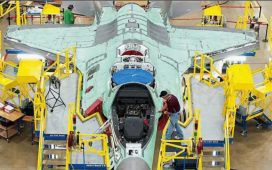
Secondly, this visit and the resultant agreements signal a maturing bilateral relationship. Singapore and India have accomplished several ‘firsts’ since the early 1990s and as result, it can become increasingly difficult to consistently look for new ways to improve the bilateral relationship. However, the India-Singapore Ministerial Roundtable (ISMR) mechanism has been utilised very effectively to create conditions for candid, focussed and in-depth discussions between both sides to continue to find meaningful ways to work together. The Memorandum of Understanding (MOU) on semiconductors is an excellent example of such discussions leading to a new and significant area of co-operation. Global concerns about the security of key supply chains have created certain potential opportunities for countries such as India, and these in turn create openings for Singapore companies constantly looking for opportunities amidst such global shifts in supply chains. The ability to identify and deliver such ‘win-win’ outcomes in new emerging areas demonstrates the maturing of this relationship.
Thirdly, this visit bodes well for the future of the Singapore-India relationship. The ISMR mechanism will continue to be a key mechanism to identify newer areas of co-operation, backed up by political consensus within both countries for a strong bilateral relationship. Greater people to people interactions will also help to solidify domestic public opinions in both countries in favour of good relations between the two states and this will be an on-going enterprise. There will be some differences between the two states in the manner they approach global and regional challenges, and this is to be expected given the stark difference in size between Singapore and India as well as the different immediate challenges facing each country.
However, both sets of leaders have made a conscious decision to move beyond these differences and seek convergence in areas that matter across the security and economic domains. India offers Singapore a key major power presence in East Asia, contributing to a varied and more stable balance of power in the region. It also offers potential opportunities to Singapore companies in new and emerging areas within a growing Indian domestic market. For India, Singapore will continue to be a key investor in India especially in new and emerging areas as Indian leaders restructure the Indian economy to deliver on the growing aspirations of India’s young population. In addition, Singapore remains a key partner for India’s continuous desire to play a bigger role in East Asia, and with it have a greater stake in the region.(The author is Senior Fellow, S.Rajaratnam School of International Studies Nanyang Technological University, Singapore)










